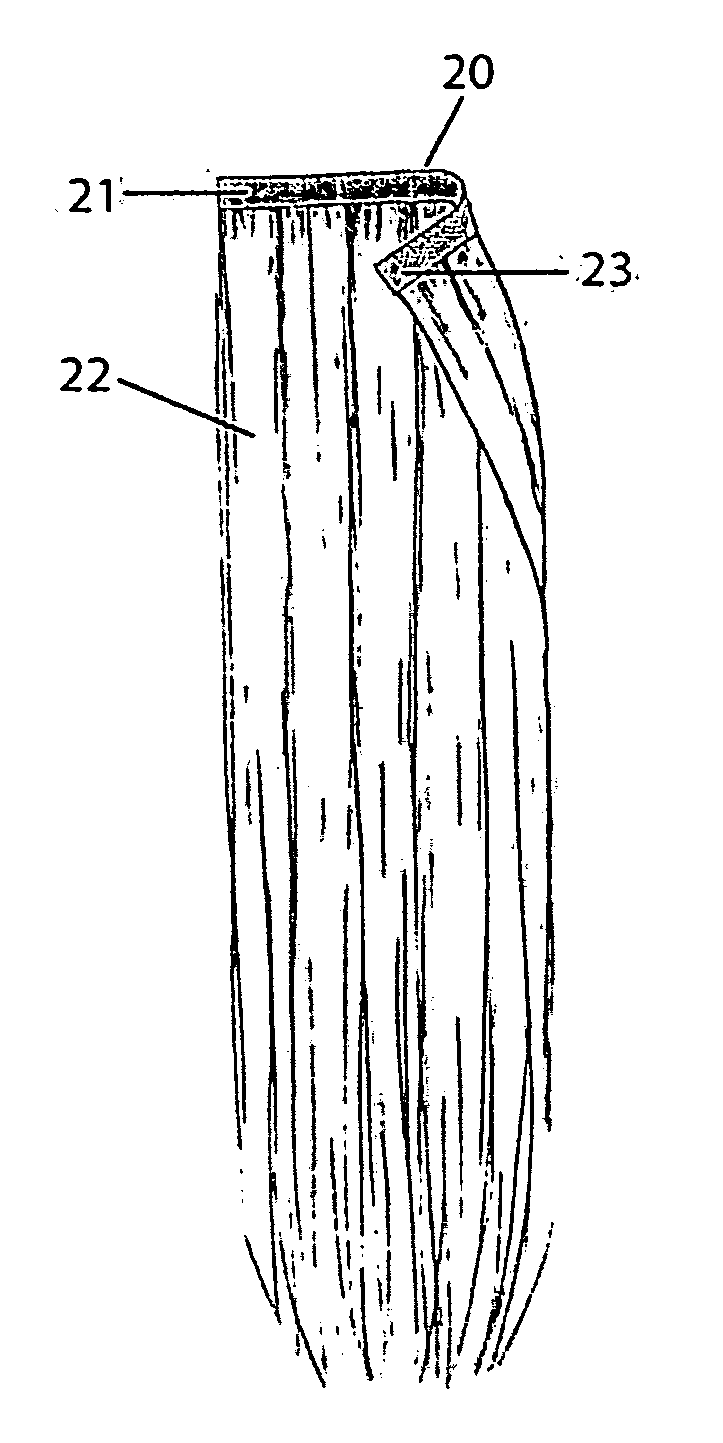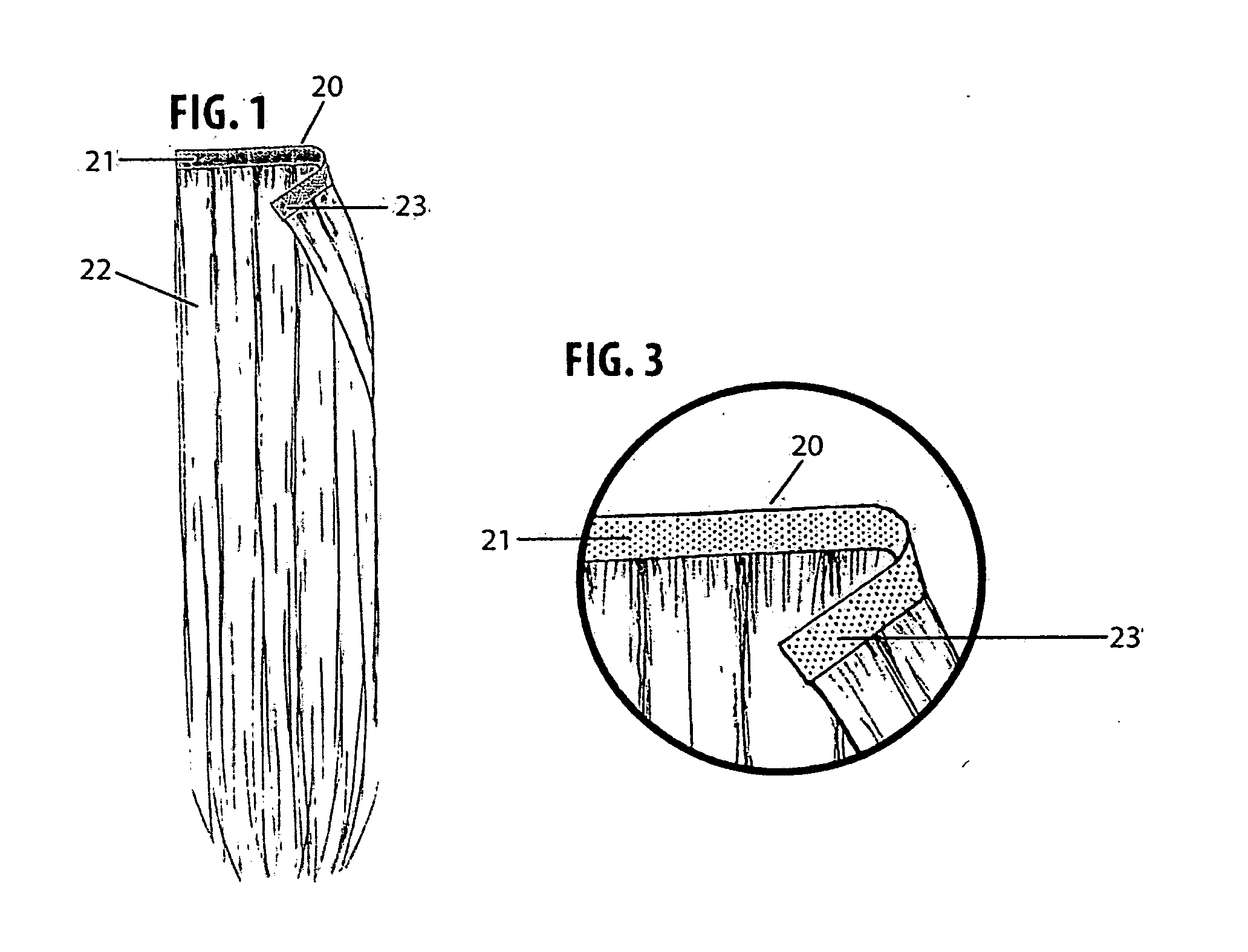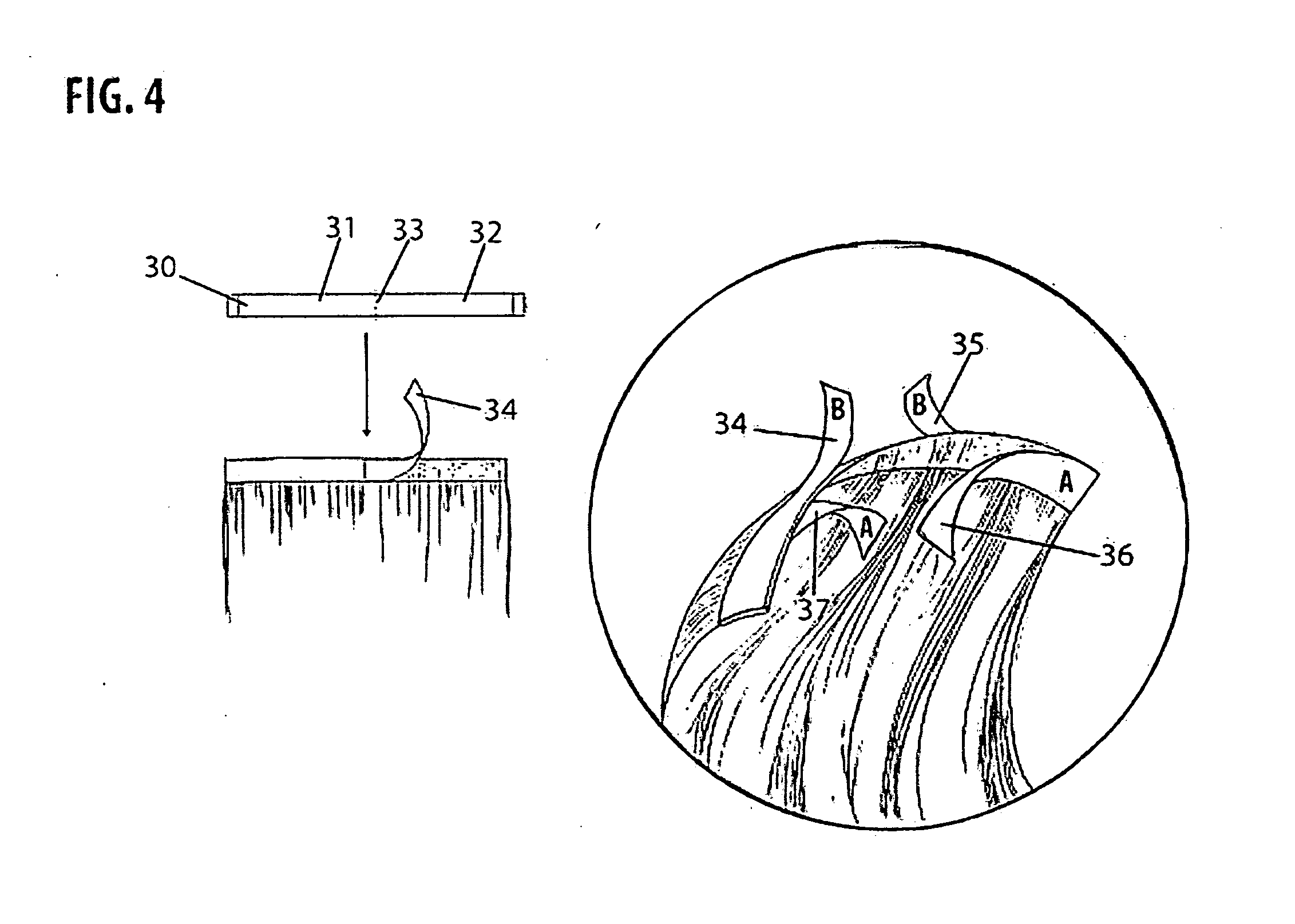Hair extension system and method
a hair extension and hair technology, applied in the field of hair extensions, can solve the problems of irritating the wearer's hair and scalp, causing hair to grow out of the roots, and causing hair to appear unnaturally colored,
- Summary
- Abstract
- Description
- Claims
- Application Information
AI Technical Summary
Benefits of technology
Problems solved by technology
Method used
Image
Examples
Embodiment Construction
[0050]The following detailed description is of the best currently contemplated modes of carrying out exemplary embodiments of the invention. The description is not to be taken in a limiting sense, but is made merely for the purpose of illustrating the general principles of the invention, since the scope of the invention is best defined by the appended claims.
[0051]Broadly, an embodiment of the present invention provides do-it-yourself hair extensions and an application method for applying hair extensions in a wearer's hair. The hair extensions may provide the appearance of highlighted, low-lighted, modern and / or fashionable color shade, add different texture locks and / or longer, thicker and fuller hair while minimizing any tension to the wearer's scalp or hair.
[0052]In one embodiment of the preferred invention, far-infrared powder is added to a polyurethane (“PU”) and / or keratin weft of natural human hair, modacrylic copolymer fibers or conventional synthetic hair that is used to ma...
PUM
 Login to View More
Login to View More Abstract
Description
Claims
Application Information
 Login to View More
Login to View More - R&D
- Intellectual Property
- Life Sciences
- Materials
- Tech Scout
- Unparalleled Data Quality
- Higher Quality Content
- 60% Fewer Hallucinations
Browse by: Latest US Patents, China's latest patents, Technical Efficacy Thesaurus, Application Domain, Technology Topic, Popular Technical Reports.
© 2025 PatSnap. All rights reserved.Legal|Privacy policy|Modern Slavery Act Transparency Statement|Sitemap|About US| Contact US: help@patsnap.com



